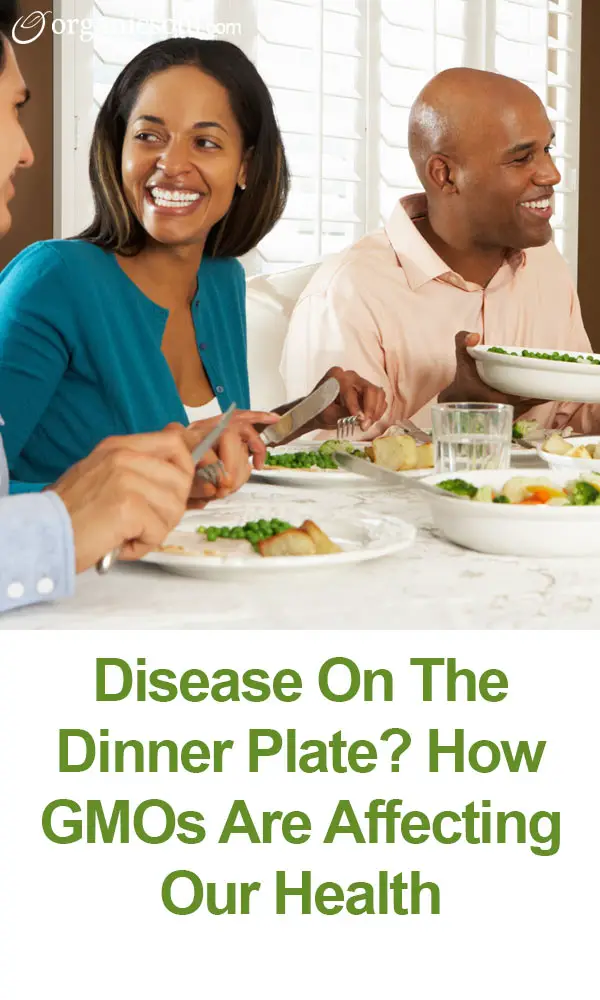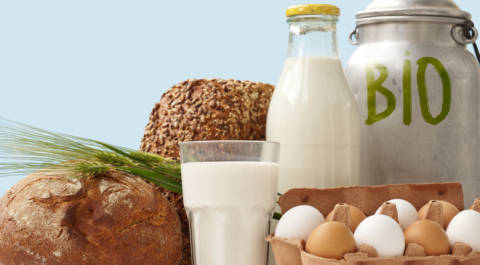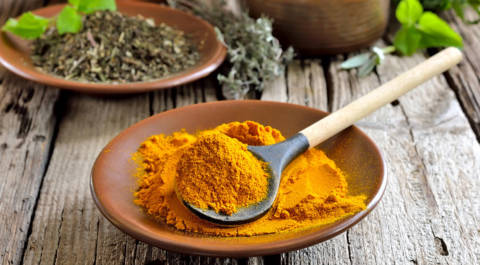It’s becoming common knowledge that the United States is the fattest country in the world and among the unhealthiest. Today, for example, nearly one out of every three Americans is obese. It's chillingly ironic that the most economically powerful country in the world is brought to its knees by unhealthy eating habits and poor lifestyle, and that despite having the largest military establishment, one in four Americans are turned away from service because they are “too heavy.”
Like Organic Soul on Facebook
Today, although many Americans are beginning to raise awareness about obesity and change their lifestyle, the fact remains that chronic illnesses are continuing to grow at an incredible rate, even leading it to be highlighted as a national security issue.
What is causing this? Are there any direct correlations? Is it that we are eating too much, or does it have to do with what it is we are eating? Furthermore, is obesity the only problem, or do health risks run much deeper?
Our story starts with Monsanto, a multinational agricultural biotechnology corporation.
Monsanto
Monsanto was founded in 1901 in St. Louis , Missouri, and has had an interesting history. Perhaps most notably, Monsanto was one of many manufacturers of Agent Orange, an herbicide used in Vietnam and later discovered to be the root cause of thousands of birth defects.
Predictably, the company has worked hard to shake off the images associated with Agent Orange. For example, anyone traveling to Monsanto’s website will first encounter this quote: “If there were one word to explain what Monsanto is about, it would have to be farmers.” While the quote certainly is positive and great for business, it hardly captures the breadth of Monsanto, its true interests, or the business it’s engaged in.
In brief, Monsanto is an agricultural biotechnology corporation, which basically means it genetically modifies food/plant commodities (corn, soy, canola, and cotton) worldwide: hence the acronym GMO, meaning genetically modified organisms. Essentially, Monsanto makes plants both more likely to survive herbicide spraying, as well as produce their own pesticides. Supposedly, this is to lead to bigger yields, to reduce need for herbicides, and to increase nutrition. Many watchdog groups like the Alliance for Bio-Integrity question these claims, and point to insufficient research to back them.
Today, Monsanto has a hand in creating over half of the country's food and produce supply.
Genetically Modified Food And Health
So what does this have to do with obesity? The answer lies in the fact that GMOs are constructed by science, not nature, and that many of the products that come from GMOs aren't recognized as digestible food by our bodies' intestinal systems. The result is a startling increase in the link between GMO food introduction and a massive rise in food allergies, obesity, diabetes, and other food-related diseases.
Even though the US has the largest production of genetically modified foods, it wasn’t always that way. GMOs didn’t even make it to the commercial scene until 1996. Back then, times were better, and the genetically modified food industry was in its infant stage of booming.
In that same year, under 100 million Americans had a chronic illness. Today, however, about half the population (nearly 150 million) suffers from at least one chronic illness. Perhaps more frightening, from 1996 to 2005, people with three or more chronic illnesses went from 7 to 13 percent, and have since then continued to grow. From 1996 to 2010, food allergies have more than doubled along with food related illnesses, and autism is growing steadily along with diabetes.
While there is no specific source for these unprecedented growths, there is one strong correlation: genetically modified foods. 1996 was the year GMOs became highly commercial, and 1996 was the year disease and illness rates began to skyrocket. In light of this, as well as the low yield, pesticide demanding nature of GMO crops (both faults that companies like Monsanto argue opposites), over 30 countries have banned genetically engineered crops.
Regardless of the moral dilemma of cloned or modified foods, there is a deeper, much more significant problem: lack of scientific assurance. According to 44,000 court-seized documents from a 1999 lawsuit against the FDA, government scientists (when tasked with developing a policy on GMOs in 1992) urged their superiors to require rigorous testing on GMOs before they were put on market. To the FDA scientists, GMOs were inherently unsafe and incredibly prone to facilitate the development of food allergies and food borne illnesses. The fear was that GMOs produce toxins the body is not used to, and could subsequently cause hard-to-detect (let alone trace) effects.
Quite simply, the best and brightest minds in science were ignored, and the FDA – then under the review of Michael Taylor (ex-attorney of Monsanto, and the then “soon to be” Vice President) – declared the policy that no testing was necessary, and genetically modified food was no different from regular food.
This was a blatant disregard for science and a corporate infiltration of government. Unbelievably, this fraud slid by media with little attention.
The Result And The Solution
Today we find ourselves in a country where 38 states have over 20% obesity rates, a statistic that was unimaginable 20 years ago, when not a single state had such a rate.
Although correlation does not always equal causation, the most radical change in human eating habits has just taken place and it would be in ignorance to ignore that. To Jeffery Smith, author of Seeds of Deception, “We’re feeding the products of an infant science, to an entire population.”
To solve this, one easy solution is to avoid all foods that have GMOs. Unfortunately, companies like Monsanto have strong-armed government and prevented GMO labeling, and with nearly 75 percent of the food we eat everyday containing some kind of GMO, it seems to be a big task to undertake.
Still, there are solutions and options. An organic or even raw food diet, free of GMO crops, is the best solution. To organic farmers, the science behind growing is easy: good soil means good crops, which means healthy people and healthy animals. It's really that simple. The best thing for you to do is to buy Non-GMO products, start your own organic garden, and shop at your farmers market. Don't be afraid to ask your local farmers if they use GMOs; the most powerful way to beat back this invasion of health is through consumer demand.












